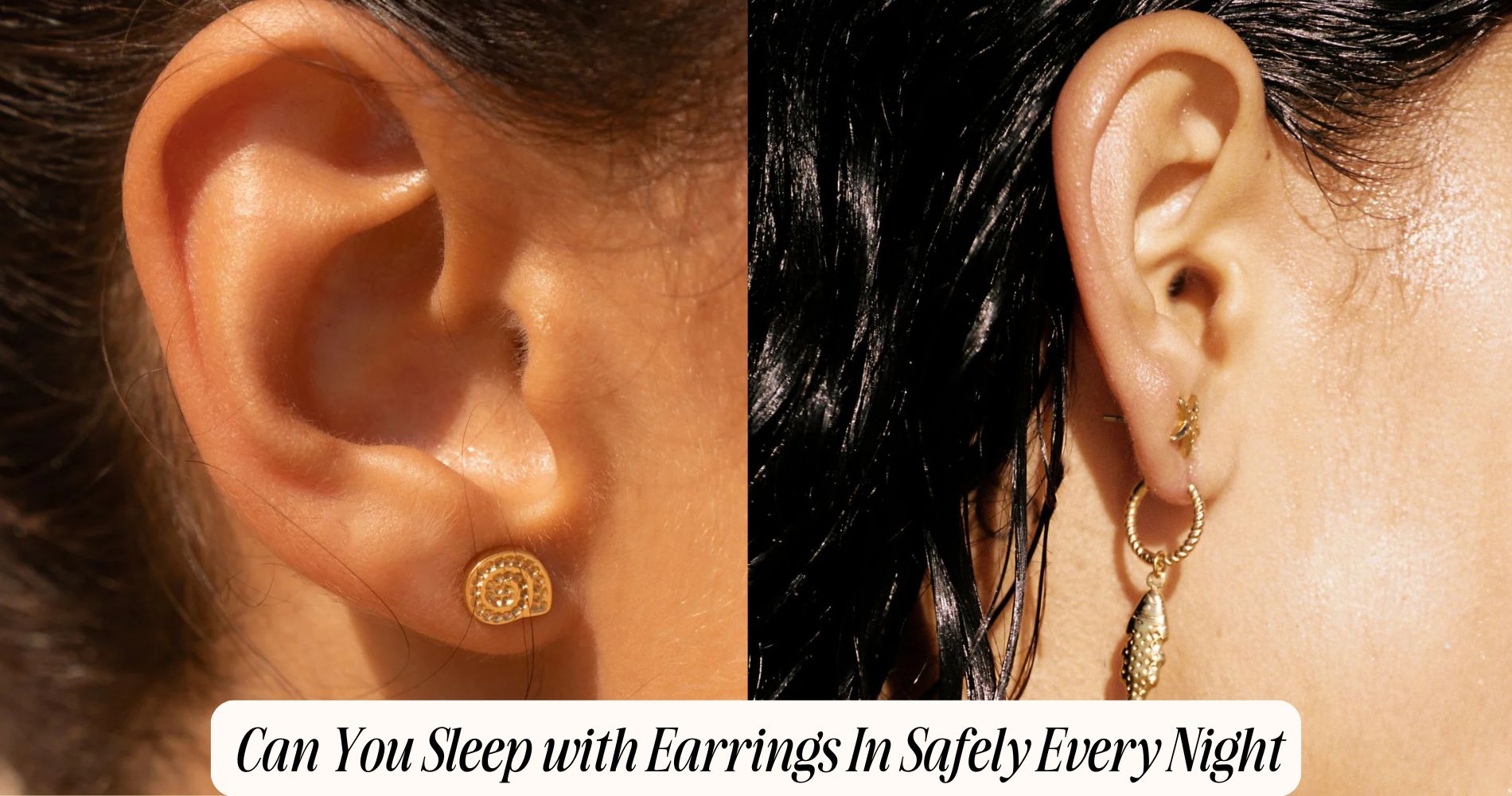
Can You Sleep With Earrings in Safely Every Night
Wondering can you sleep with earrings in without causing problems? It depends on the type of earrings and how well your piercings have healed. Sleeping with earrings can lead to pressure injuries, microtears, irritation bumps, or even infection—especially with new piercings. If you decide to keep them on overnight, choose healed piercings, flat-back low-profile studs, and inert metals like implant-grade titanium, platinum, or solid gold. Avoid hoops and dangles that snag easily. Always clean your posts, backs, and skin, keep products off the piercing tract, and remove your earrings at the first sign of redness or pain. For safer comfort, try waterproof earrings made for all-day and all-night wear.
What Happens to Your Ears While You Sleep
Although your ears seem idle overnight, they’re under mechanical and microbial stress while you sleep. Your sleep position compresses the helix, antihelix, and tragus, stressing cartilage and thinning skin. Prolonged lateral pressure reduces perfusion, raising risks of chondritis, pressure injury, and delayed wound repair after recent piercings.
Friction against bedding abrades the stratum corneum, increasing transepidermal water loss and microfissures that allow bacterial ingress.
Ear anatomy creates narrow creases that trap heat, moisture, and sebum, especially in the conchal bowl. That microclimate favors staphylococcal and fungal overgrowth. If hair products or sweat accumulate, bioburden rises.
Micro-movements from breathing and turning repeatedly shear the lobule and piercings, irritating epithelialized tracts. Monitor localized tenderness, edema, crusting, or warmth on waking; these signals warrant cleaning, load reduction, and altered sleep position.
Pros and Cons of Sleeping With Earrings In
Depending on the earring type and your ear health, sleeping with earrings offers convenience but adds mechanical and infectious risk. You avoid morning reinsertion, preserve tract patency, and maintain your fashion choices without gaps. Low-profile studs may distribute pressure evenly, which can offer minor comfort and adherence benefits for sensitive lobes.
However, risks outweigh perceived health benefits for many. Nighttime friction and torque can cause microtears, pressure necrosis, keloid-prone scarring, and contact dermatitis—especially from nickel or poorly finished posts. Posts and backs can embed in tissue, inviting biofilm formation and bacterial infection.
Hoops and dangles snag on hair or bedding, raising laceration and partial tear risk. Sleep position concentrates force on one side, creating asymmetry. If you choose to sleep in earrings, prioritize flat-back, inert materials, and meticulous hygiene.
New Piercings vs. Healed Piercings: Key Differences
Because tissue biology changes over time, new piercings behave like fresh wounds, while healed piercings function as epithelialized tracts—and you should manage them very differently at night.
In a new piercing, the healing process involves inflammation, fragile granulation tissue, and a narrow, unstable channel. Sleeping on it increases edema, pain, bleeding, and displacement, raising risks of infection and hypertrophic scarring. You should avoid pressure, secure the post, and follow strict aftercare tips: saline cleanses, dry handling, and no rotation.
Healed piercings have a matured epithelial lining that resists closure and lowers microbial ingress, but they’re not risk-free.
Night pressure can still cause irritation bumps, embedding, or keloids in predisposed skin. Minimize friction, keep backs slightly loose, clean routinely, and reassess fit if swelling, warmth, or discharge develops.
Materials That Are Safer for Overnight Wear
Material choice drives how your skin reacts overnight, especially in a fresh piercing. You reduce risk by choosing inert, low-nickel options. Implant-grade titanium (ASTM F-136 or F-1295) shows excellent biocompatibility and minimal nickel release. Platinum and 14k–18k solid gold (nickel-free, alloyed with palladium) also perform well.
Surgical stainless steel is acceptable only when certified low-nickel; some grades still leach nickel with sweat and friction. If you’re nickel-sensitive, prioritize hypoallergenic metals and verify documentation from reputable piercers or manufacturers. Niobium is another stable, corrosion-resistant option.
Avoid plated, mystery alloys, and brass, which chip or corrode and elevate dermatitis risk. Silicone earrings can reduce pressure, but only medical-grade silicone is suitable; low-quality silicone additives may trigger irritation.
Clean all materials routinely to limit biofilm and inflammation.
Earring Styles and Backings Best Suited for Sleep
Alongside biocompatible metals, the shape and fastening of your earrings determine pressure points, snag risk, and healing outcomes overnight.
Choose low-profile stud earring styles with smooth fronts and flat or dome backs to minimize focal pressure on the lobule and conchal bowl. Opt for labret posts (flat-disc backs) or L-shaped posts over butterfly clutches; they distribute force better and reduce poke-through. Screw-back studs are secure but can create localized pressure if the cap is small—select wide, smooth caps.
Use hypoallergenic backings made from titanium or medical-grade plastic to lower sensitization risk. Avoid hoops, dangles, and huggies with hinges; moving components elevate snag and torque.
Pick short posts matched to tissue thickness to prevent embedding. Confirm polished edges, seamless joints, and correct gauge to reduce microtrauma during sleep.
Risks to Watch For: Irritation, Infection, and Pressure Sores
Even with careful jewelry choices, sleeping in earrings can trigger three common problems: mechanical irritation, bacterial or fungal infection, and pressure-related skin injury.
Friction and micro-movement abrade the piercing tract, causing erythema, burning, or serous crusting. That trauma compromises the skin barrier and raises infection risk. Watch for infection signs: escalating pain, warmth, swelling, purulent discharge, or fever; fungal involvement may show pruritus with macerated, whitish skin.
Pressure sores form when a post or backing compresses tissue against the skull, reducing perfusion. You may notice a tender, blanched spot that later darkens or ulcerates.
Cartilage piercings are especially vulnerable due to limited blood supply. Prioritize irritation prevention by monitoring fit and contact points, and stop overnight wear at the first indication of worsening redness, drainage, or pressure pain.
Tips to Reduce Discomfort and Skin Reactions
Given those risks, focus on practical steps that lower friction, moisture, and pressure.
Choose small, low-profile studs with smooth backs; avoid sharp posts and heavy drops. Use inert metals (titanium, surgical steel, platinum) to reduce allergy reactions, especially if you have skin sensitivity or eczema.
Clean earrings and lobes nightly with saline or fragrance-free micellar water; dry thoroughly to limit maceration. Apply a thin layer of petrolatum to the post-hole interface to reduce shear.
Secure backs gently—snug, not tight—to maintain perfusion. Swap rubber or flat “disc” backs for butterfly clasps that don’t compress. Use a silk pillowcase to reduce drag.
Rotate earrings slightly after cleaning to prevent crust adherence. If redness, heat, or exudate develops, pause wear and reassess fit and materials.
When You Should Take Earrings Out at Night
While nightly removal isn’t mandatory for everyone, you should take earrings out at night if you notice signs of irritation (tenderness, warmth, swelling, crusting), have a known metal allergy, recently changed metals or styles, or wear tight backs that indent the lobe.
You should also prioritize earring removal if earrings snag on bedding, you sleep prone or side-lying with pressure on the lobe, or you wear heavy hoops or dangles that amplify shear and torque.
Remove earrings if you’ve had recent dermatologic treatments near the ear, active eczema, or recurrent keloids.
If you’re immunocompromised or diabetic, minimize overnight exposure to reduce infection risk. Persistent nighttime pain, throbbing, or heat warrants a break.
Finally, if earrings disrupt sleep quality—causing awakenings or position changes—take them out to protect tissue and rest.
How to Clean Earrings and Care for Piercings
Because earrings sit against warm, occluded skin, biofilm and debris accumulate quickly, so consistent hygiene prevents dermatitis and infection.
For earring maintenance, wash hands, then remove jewelry. Clean posts and backs with fragrance‑free soap and warm water; rinse and pat dry. Disinfect metal surfaces with 70% isopropyl alcohol; avoid soaking porous stones or wood.
For piercing hygiene, cleanse the site twice daily with sterile saline (0.9% NaCl). Don’t rotate jewelry; micro‑tears increase colonization. Keep hair products and makeup off the tract. Replace butterfly backs that trap residue with secure, ventilated alternatives.
Watch for warning signs: escalating pain, spreading redness, purulent drainage, fever, or a tight, embedded back; seek medical care promptly. If you’re nickel‑reactive, use implant‑grade titanium or 14k–18k gold.
Safe Alternatives for Keeping Holes Open Overnight
If you want to keep a piercing from shrinking without sleeping in regular earrings, choose low‑profile, biocompatible retainers designed for overnight wear.
Opt for implant‑grade titanium, niobium, PTFE, or medical‑grade silicone. These materials reduce metal allergy risk and minimize friction. Select flat‑back labrets or soft flexible posts to lower pressure points and snagging.
Use these safety tips: insert only fully healed piercings; wash hands; clean the retainer with saline; apply a thin water‑based lubricant; and confirm a secure, low‑profile fit.
Avoid acrylic, nickel alloys, and bulky shapes. If you feel pain, warmth, or discharge, remove the device and seek care.
Practical jewelry alternatives include clear PTFE retainers, silicone eyelets for stretched lobes, and threadless titanium labret posts with flat discs for stable, comfortable overnight wear.
Frequently Asked Questions
Can Sleeping With Earrings Affect Hair Tangling or Breakage?
Yes. Sleeping with earrings increases ear tangling and hair breakage risk. Posts, hooks, and backs snag strands, causing traction, split ends, and knotting. Choose smooth, flat studs, secure hair, or remove earrings to reduce mechanical stress and cumulative damage.
Do Certain Pillow Types Make Sleeping With Earrings Safer?
Yes. You reduce risks using soft, low pillow firmness and a smooth, breathable pillowcase (silk/satin). These minimize pressure, snagging, and shear. Pair with flat-backed studs and hypoallergenic earring materials (titanium, surgical steel) to limit irritation, pressure sores, and infections.
Can Wearables Like Sleep Masks Interfere With Earrings Overnight?
Yes. Sleep masks can interfere with earrings by snagging straps, compressing lobes, and increasing infection or pressure injury risk. For earring safety, choose strapless or adjustable masks, smooth fabrics, low-profile studs, nightly hygiene, and discontinue use if pain, redness, or drainage occurs.
How Do Ear Gauges or Plugs Change Overnight Safety Considerations?
Ear gauges or plugs alter risks by size, shape, and gauge materials. Choose biocompatible silicone or titanium for overnight comfort, avoid acrylic, and secure flares. Monitor pressure points, swelling, and discharge; remove during infections, fresh stretches, or keloid history.
Are There Age-Specific Guidelines for Children Sleeping With Earrings?
Yes. For children, prioritize ear care by removing earrings nightly after initial healing. Choose small, smooth jewelry; avoid hoops. Use hypoallergenic jewelry choice. Monitor for pain, redness, discharge. For infants, avoid earrings during sleep due to choking and laceration risks.
Conclusion
Bottom line: you can sleep with earrings in, but weigh the risks. New piercings need continuous wear; healed piercings don’t. Choose inert metals (implant‑grade titanium, 14k–18k gold, niobium, platinum) and low‑profile, flat‑back studs to reduce pressure, snagging, and dermatitis. Clean jewelry and skin regularly, and use a clean pillowcase. Remove earrings if you have pain, swelling, drainage, or eczema. If you’re prone to keloids, infections, or nickel allergy, avoid overnight wear and consider retainers.







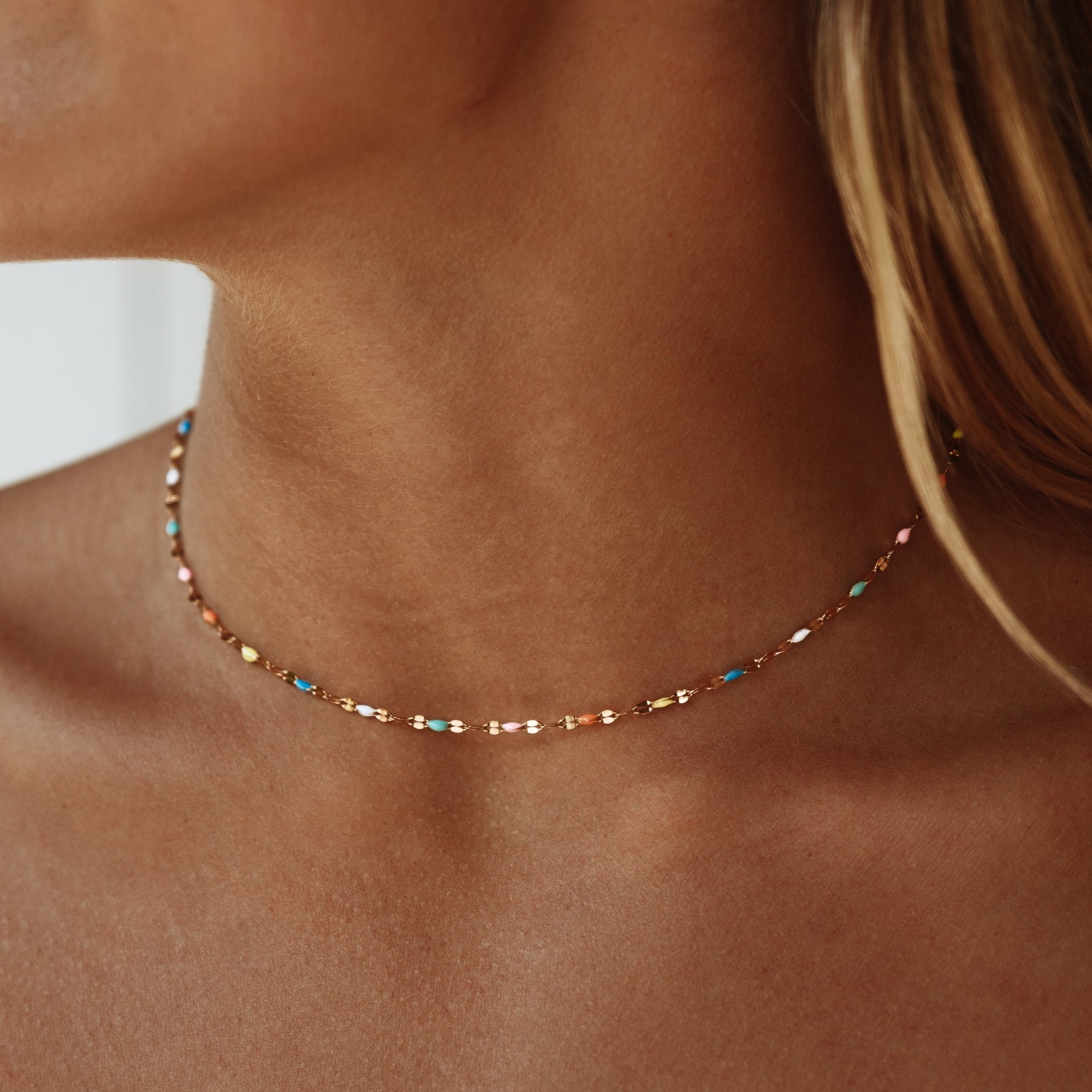

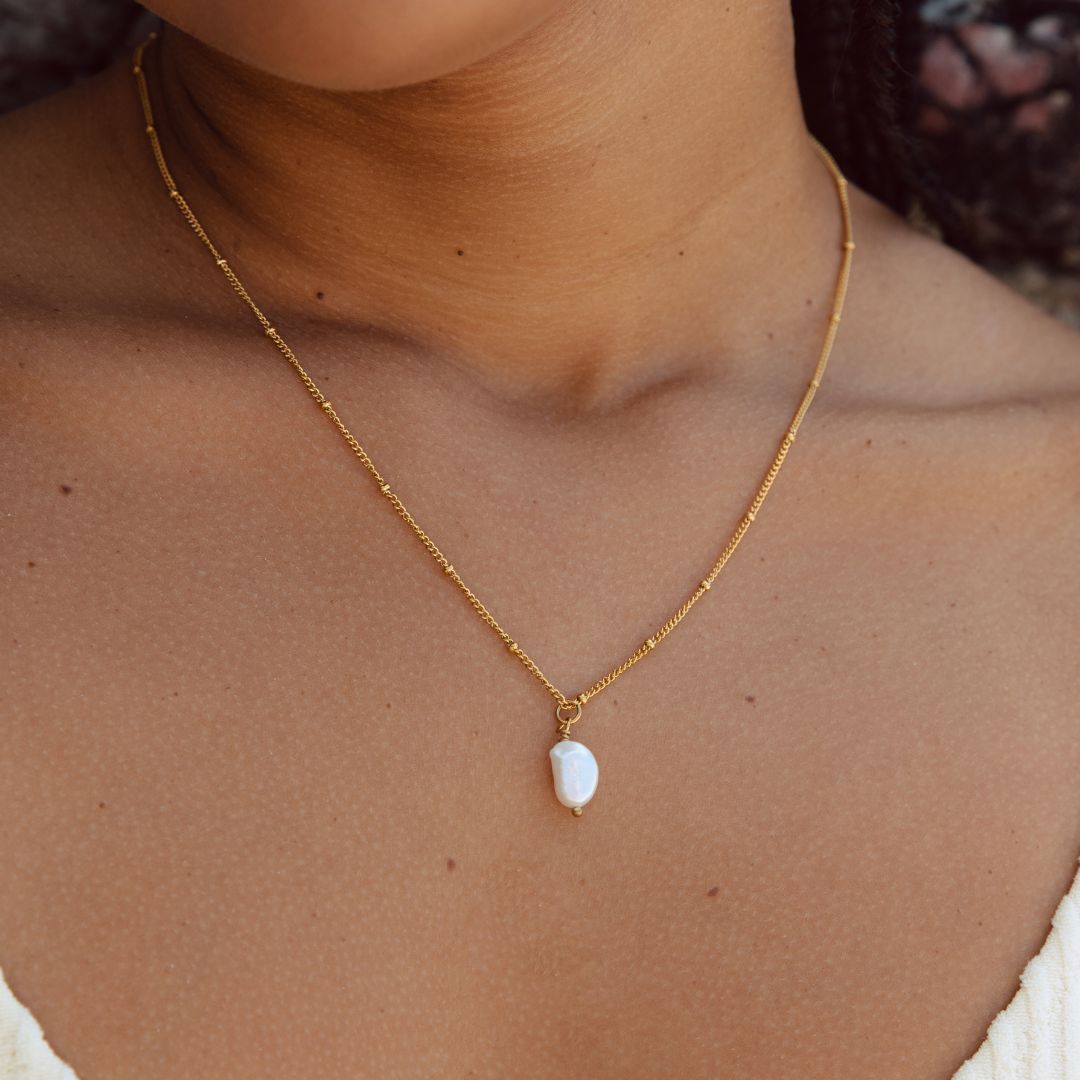


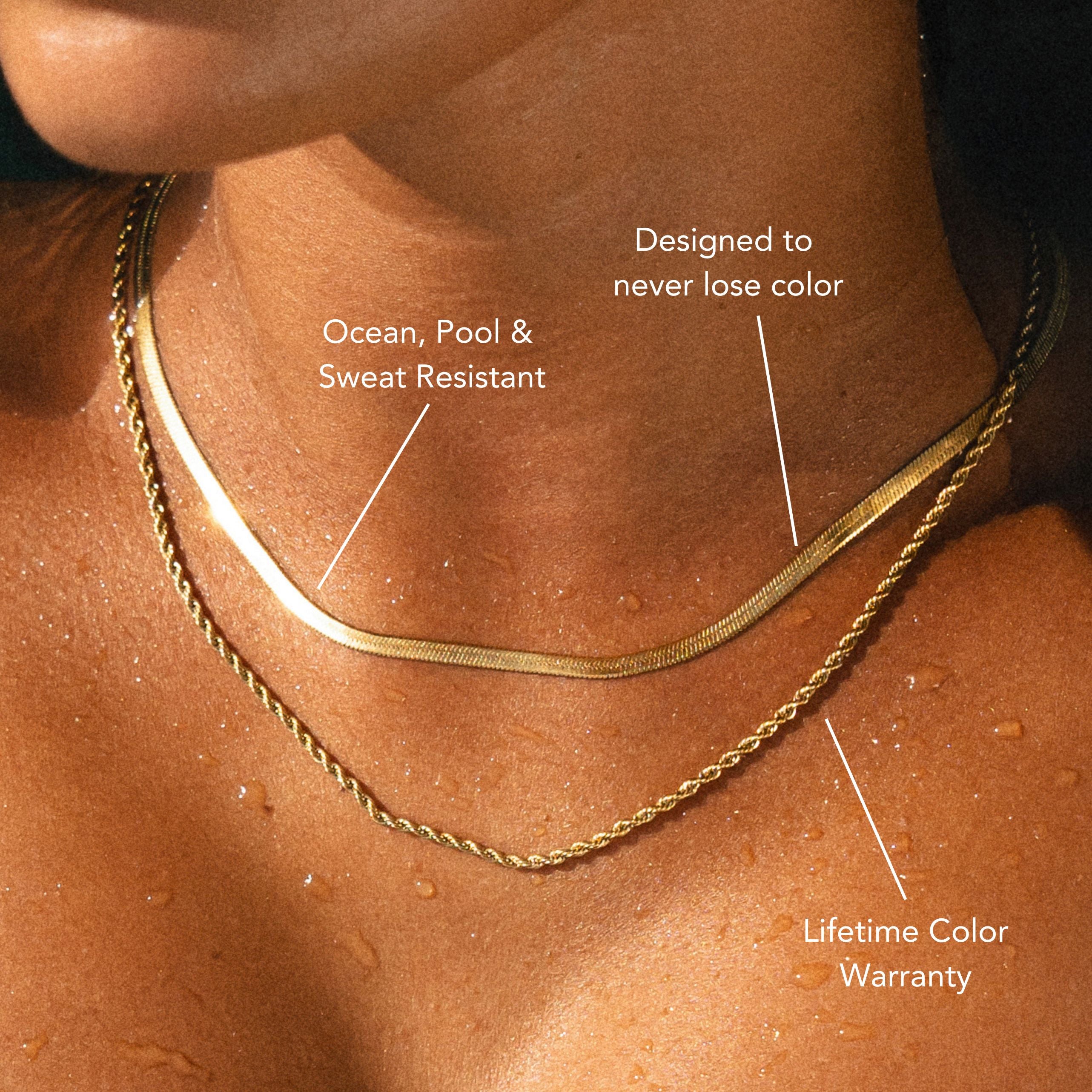


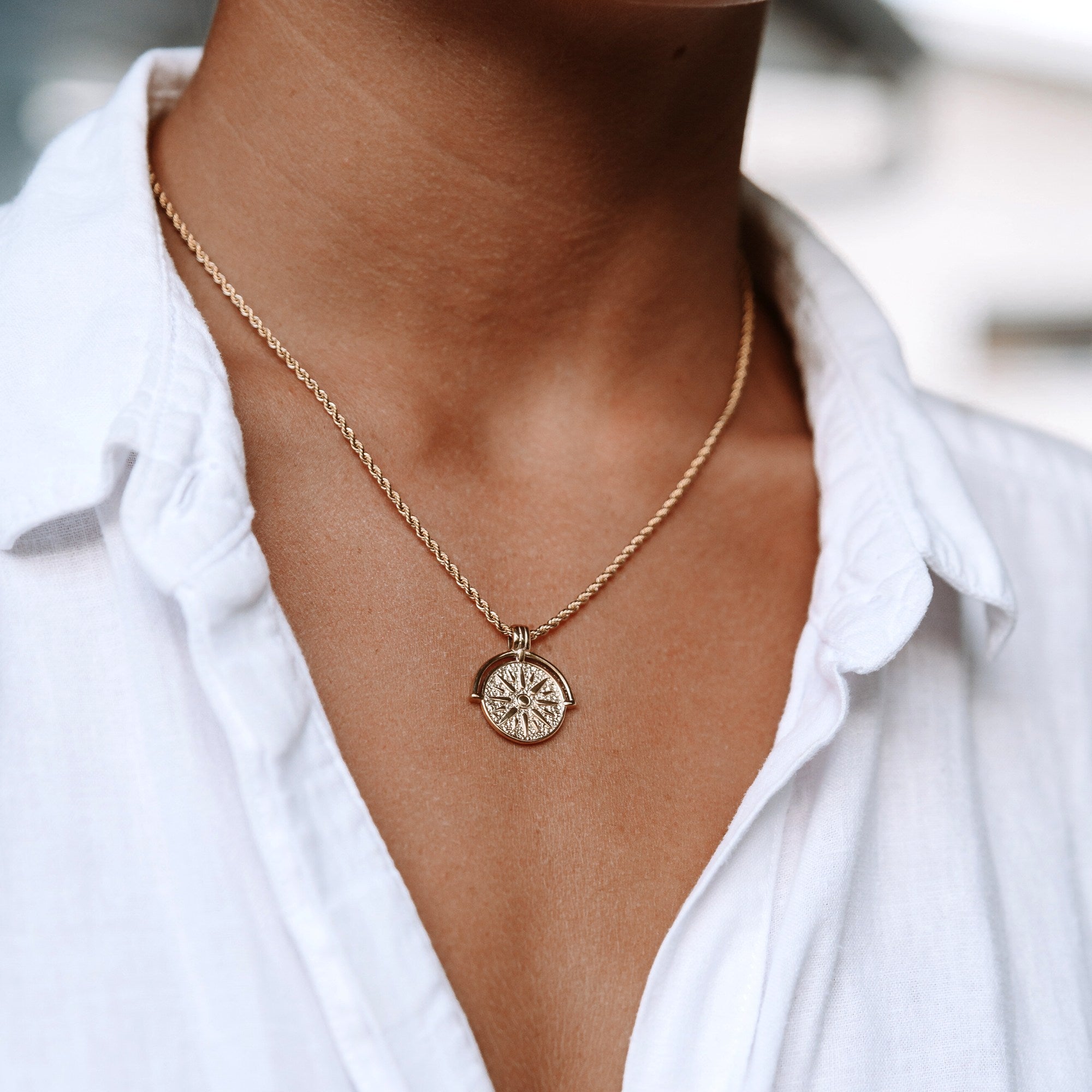
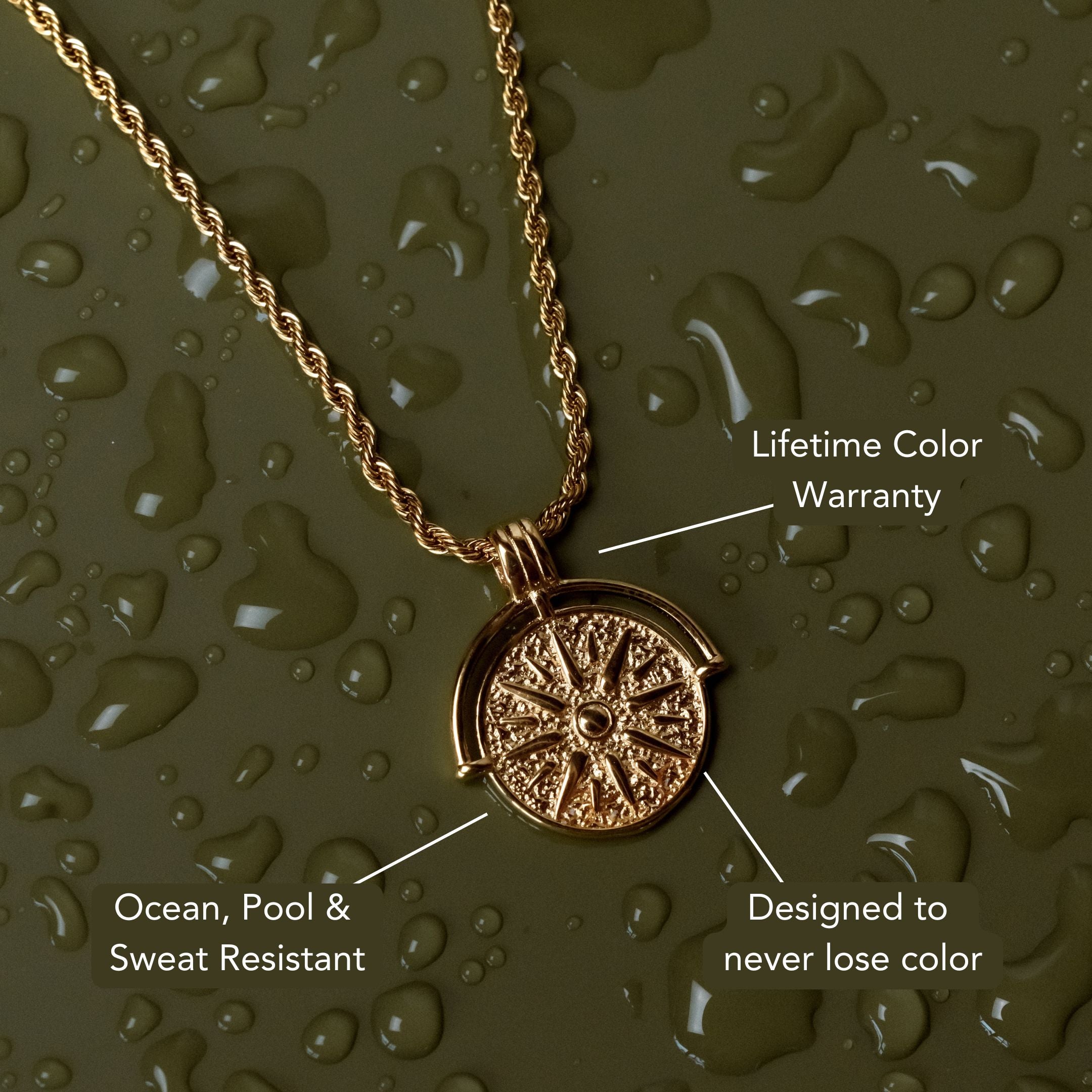
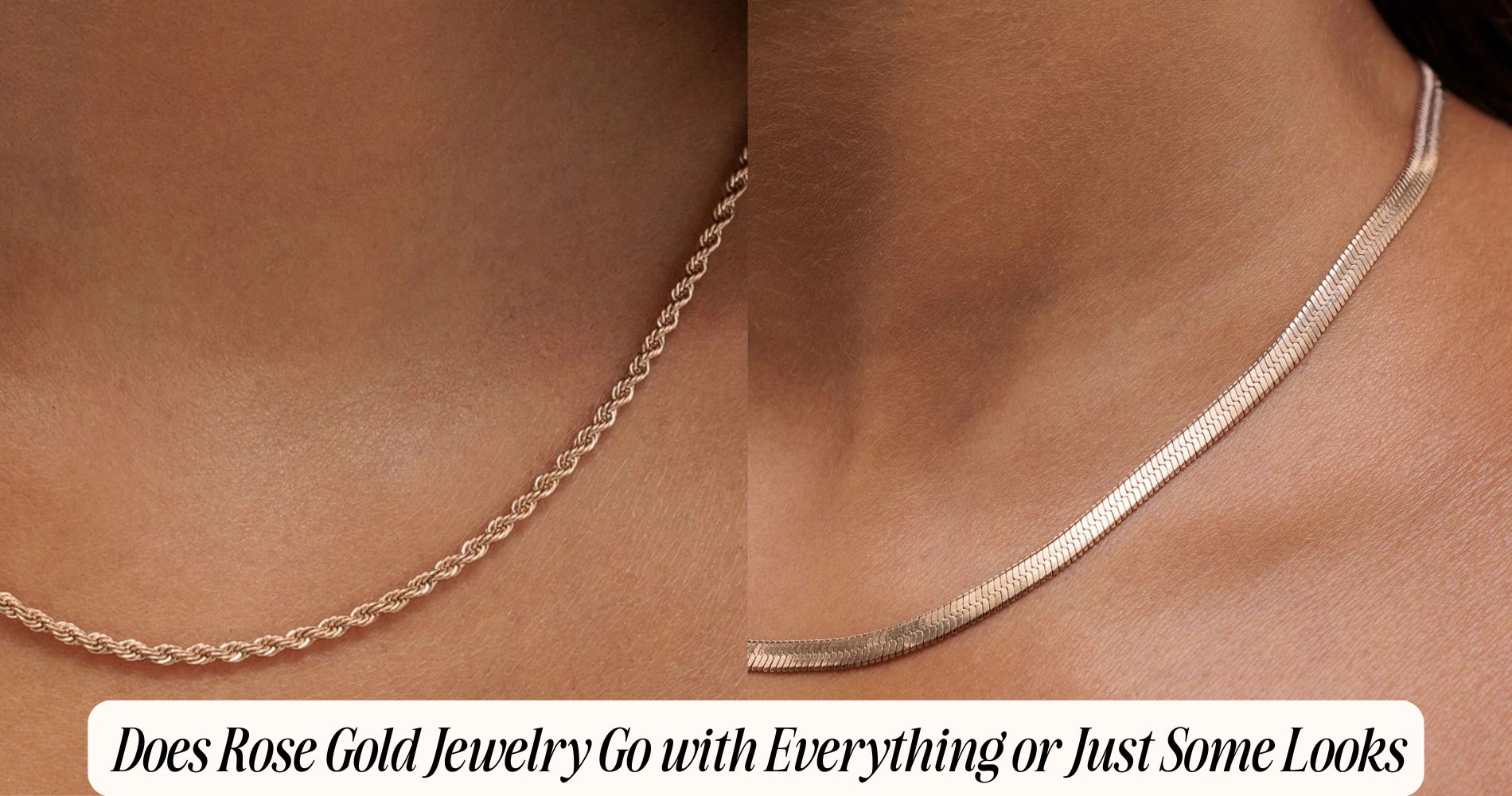
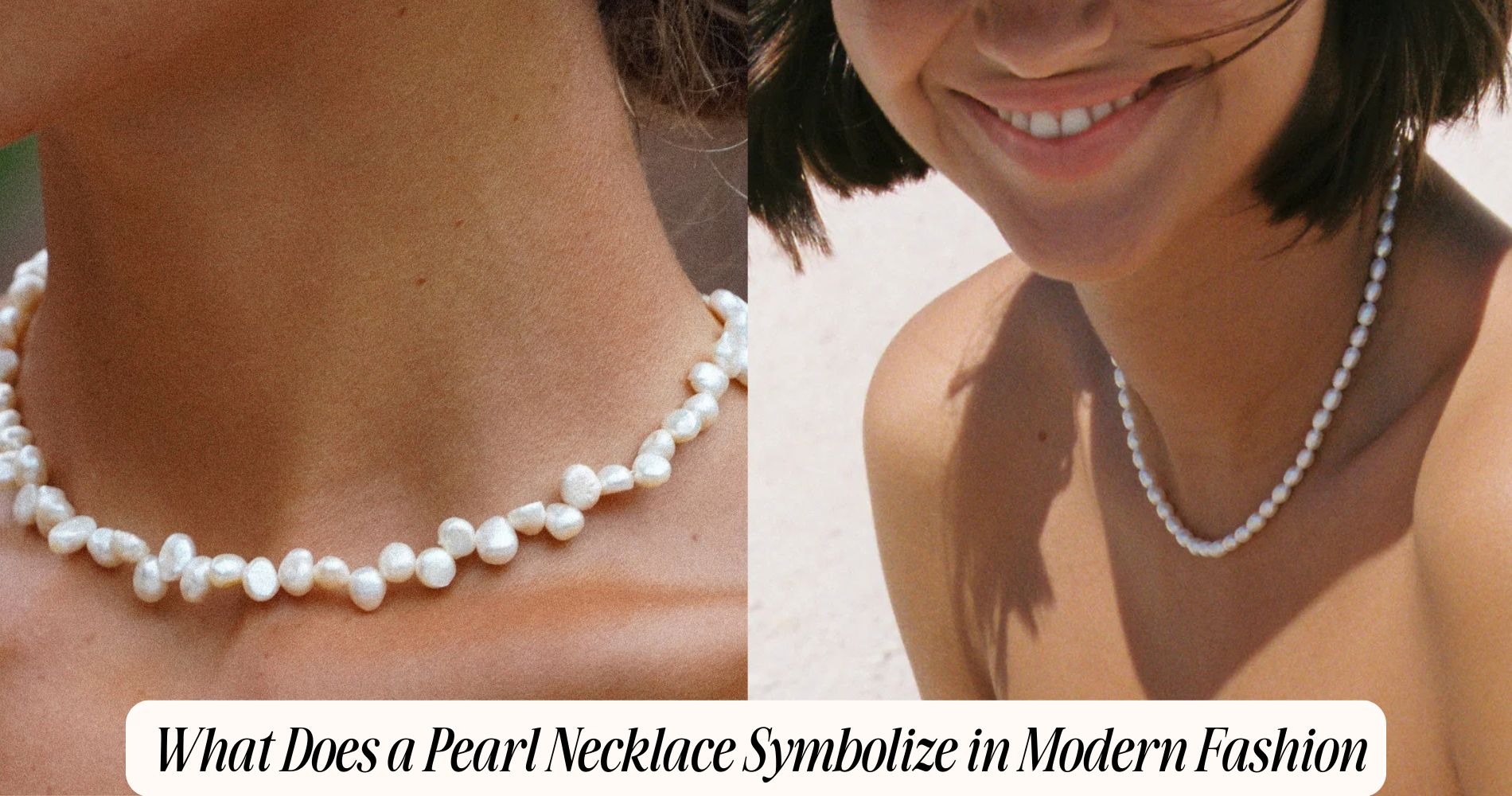




Leave a comment
This site is protected by hCaptcha and the hCaptcha Privacy Policy and Terms of Service apply.